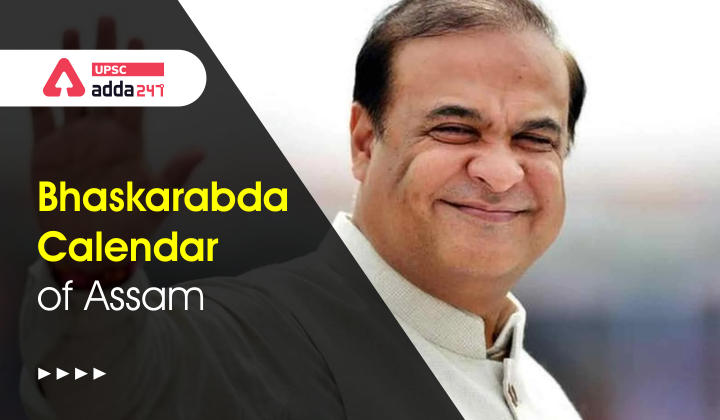Bhaskarabda Calendar of Assam
G.S. Paper 1
Context
In addition to Saka and Gregorian, Bhaskarabda will be used in the official calendar by the Assam government.
Background
Currently, the Assam government uses the Saka calendar and the Gregorian calendar. The Saka calendar uses a lunisolar time tracking system, instead of the sidereal signs used in the Hindu calendar; the months in this calendar follow the tropical Zodiac signs. The Gregorian calendar is a solar dating system widely used around the world. Recently, the decision to use ‘Bhaskarabda’ in the official calendar was announced by the Assam CM in a meeting held with the officials of the General Administration Department (GAD).
How will it work?
- Bhaskarabda, an era counted from the date of the ascension of a 7th-century local ruler, will be added to the Saka and Gregorian in the official calendar of the Assam government.
- Bhaskarabda began when Kumar Bhaskaravarman was crowned ruler of the Kamrupa kingdom. He was a contemporary and political ally of northern Indian ruler Harshavardhana.
- Unlike the Gregorian, where a day starts at midnight, the Assamese calendar begins and ends at sunrise over 24 hours. While the Gregorian goes by the solar cycle, the Saka and Bhaskarabda use a lunisolar system based on both the phases of the moon and the solar year.
- The gap between Bhaskarabda and Gregorian is 593
- The government of Assam has decided to publish theme-based calendars every year. Flora and animals, culture, and gastronomy will all be featured in the calendars.
Gregorian Calendar
- The Gregorian calendar also called the New Style calendar, is a solar dating system used by most of the world.
- It is named for Pope Gregory XIII, who issued the papal bull Inter gravissimas in 1582, announcing calendar reforms for all of Catholic Christendom.
- The Gregorian calendar modified the existing Julian calendar, which Julius Caesar had introduced to the ancient Roman Republic in 46 BCE.
The Saka Calendar
- The historical consensus is that it began in the 78th year of the Common Era.
- It is based on the lunisolar reckoning of time.
- The calendar consists of 365 days/12 months like the normal Gregorian calendar.
- Chaitra is the first month of the year beginning on March 22 which is the day after the Spring Equinox. During leap years, the starting day of Chaitra corresponds with March 21.
- The Calendar Reform Committee headed by Meghnad Shah introduced the Saka Calendar in 1957.
Note: Although it is deemed as a national calendar, the Saka Calendar is seldom used outside of very formal Government of India documents. Its most noted use is in the Gazette of India, alongside the commonly used Gregorian calendar. All India Radio Broadcasts follow the Saka Calendar and time. Other official Government of India Calendars, timetables, documents and communications refers to the Saka Calendar dates.
The names of the months in the Saka Calendar are:
• Chhaitra (March 21 – April 20)
• Vaishakha (April 21-May 21)
• Jyeshtha (May 22-June 21)
• Ashadha (June 22- July 22)
• Shravana (July 23-August 22)
• Bhaadra (August 22-September 22)
• Ashwin (September 23-October 22)
• Kartika (October 23-November 21)
• Agrahayana (November 22-December 21)
• Pausha (December 22-January 20)
• Magha (January 21- February 19) and
• Phalguna (February 20-March 20/21)
Source: The Hindu


 TSPSC Group 1 Question Paper 2024, Downl...
TSPSC Group 1 Question Paper 2024, Downl...
 TSPSC Group 1 Answer key 2024 Out, Downl...
TSPSC Group 1 Answer key 2024 Out, Downl...
 Cabinet Ministers of India 2024, New Cab...
Cabinet Ministers of India 2024, New Cab...







